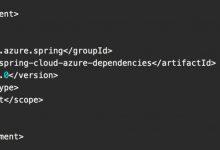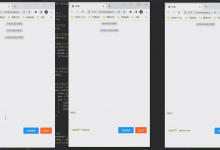我们上一篇文章说到输入对话框,输入对话框返回的是一个字符串,如果说我们输入的数字值123,那么返回的会是\’123\’,我们必须要把字符串转化为数字值以得到数字型的输入,要把一个字符串转化成为int型值,使用Interger类中的parseInt方法。
int intValue = Integer.parseInt(intString);这里的intstring是一个数值字符串。同样的,如果要将一个字符串转换为一个double型的值,使用Double类中的parseInt方法。
double doubleValue = Double.parseInt(doubleString);这里的doubleString是一个数值字符串,例如:123.45.Integer类和Double类都包含在java.lang中,因此他们都是自动导入的。
我们下面举个例子,来读取并使用对话框,我们要从对话框中读取年利率,年数,贷款总额,然后显示月支付额和总支付额。
首先建立数学模型,已知贷款额A,贷款年限B,年利率C,求总贷款额和月供X。由已知条件,可求得B年内总共需要还款Y=A*(1+C)^B,而B年内一共有B*12个月,因此月供X=Y/(B*12),程序清单如下。
import javax.swing.JOptionPane;
/**
*
* @author mjd
*/
public class ComputeLoanUsingInputDialog {
/**
* @param args the command line arguments
*/
public static void main(String[] args) {
// TODO code application logic here
String annualInterestRateString = JOptionPane.showInputDialog(\”Enter yearly interest rate,\\nfor example 8.25:\”);
double annualInterestRate = Double.parseDouble(annualInterestRateString);
double monthlyInterestRate = annualInterestRate/12/100;
String numberOfYearsString = JOptionPane.showInputDialog(\”Enter number of years,\\nfor example 5:\”);
int numberOfYears = Integer.parseInt(numberOfYearsString);
String loanString = JOptionPane.showInputDialog(\”Enter loan amount,\\nfor example 200014.58\”);
double loanAmount = Double.parseDouble(loanString);
double totalPayment = loanAmount*Math.pow(1+annualInterestRate/100, numberOfYears);
double monthlyPayment = totalPayment/(numberOfYears*12);
monthlyPayment = (int)(monthlyPayment*100)/100.0;
totalPayment = (int)(totalPayment*100)/100.0;
String output = \”The monthly payment is\”+monthlyPayment+\”\\nThe total payment is\”+totalPayment;
JOptionPane.showMessageDialog(null,output);
}
}

点击运行后,会显示由对话框输入 ,最后由对话框输出。

第一个显示的对话框为输入的年利率,输入double类型的数据后点击确定。

第二个显示的对话框为输入的年限,输入int类型的数据后点击确定。

第三个显示的对话框为输入的贷款总额,输入int类型或者double类型都可以,输入完成后点击确定。

最后会以对话框的形式输出月支付额和总支付额,程序完成。
产生随机数
首先我们介绍一下boolean数据类型(布尔类型),我们在编程中该如何比较两个值呢,例如说一个半径是大于0,小于0还是等于0呢,Java提供六种比较运算符,用于两个值的比较,<,<=,>,>=,==,!=,比较的结果是一个布尔值,true或者false,例如:
double radius = 1;
System.out.println(radius>0);
这样的输出会显示true,具有布尔值的变量称为布尔变量,boolean型变量只可能是true或者false。
我们用一个例子来验证,让程序随机产生整数,产生随机数的方法有很多种,我们现在采用其中的一种,另外几种我们在下面的文章中介绍,现在我们使用System.currentTimeMillis()%10产生第一个整数,使用System.currentTimeMillis()*7%10产生第二个整数,最后使用布尔表达式来判断答案是否正确,程序清单如下。
import java.util.Scanner;
public class Random {
public static void main(String[] args) {
// TODO code application logic here
int number1 = (int)(System.currentTimeMillis()%10);
int number2 = (int)(System.currentTimeMillis()*7%10);
Scanner input = new Scanner(System.in);
System.out.print(\”What is\”+number1+\”+\”+number2+\”?\”);
int answer = input.nextInt();
System.out.println(number1+\”+\”+number2+\”=\”+answer+\”is\”+(number1+number2==answer));
}
}

在最下方输入框输入答案,会有两种显示结果。


一种输出为true,另一种输出为false,这就是使用布尔值进行输出的案例,希望我们共同学习,一起进步,谢谢。
 爱站程序员基地
爱站程序员基地


